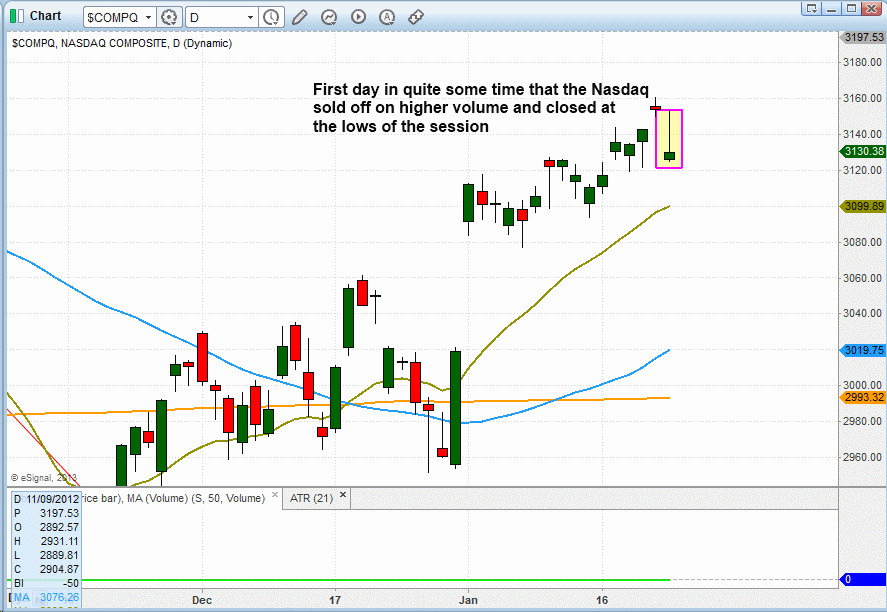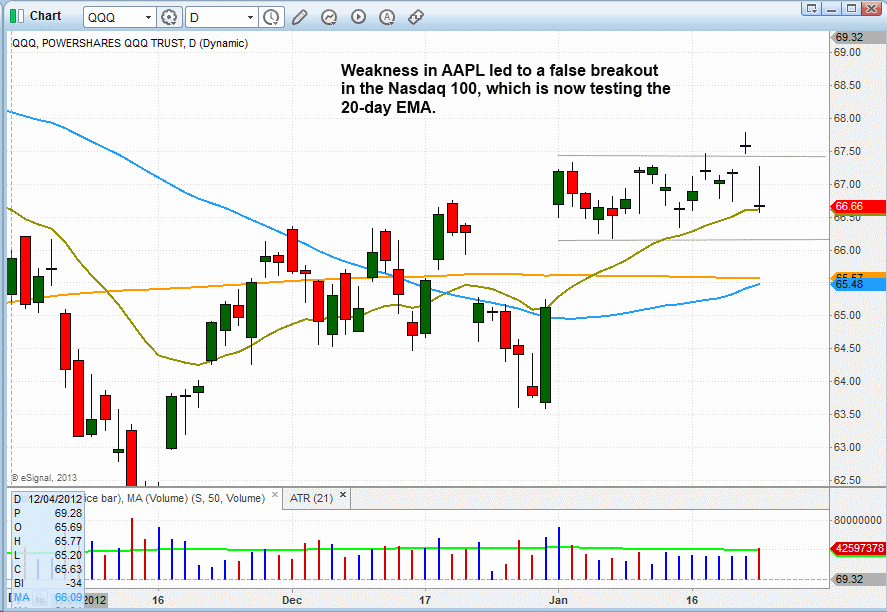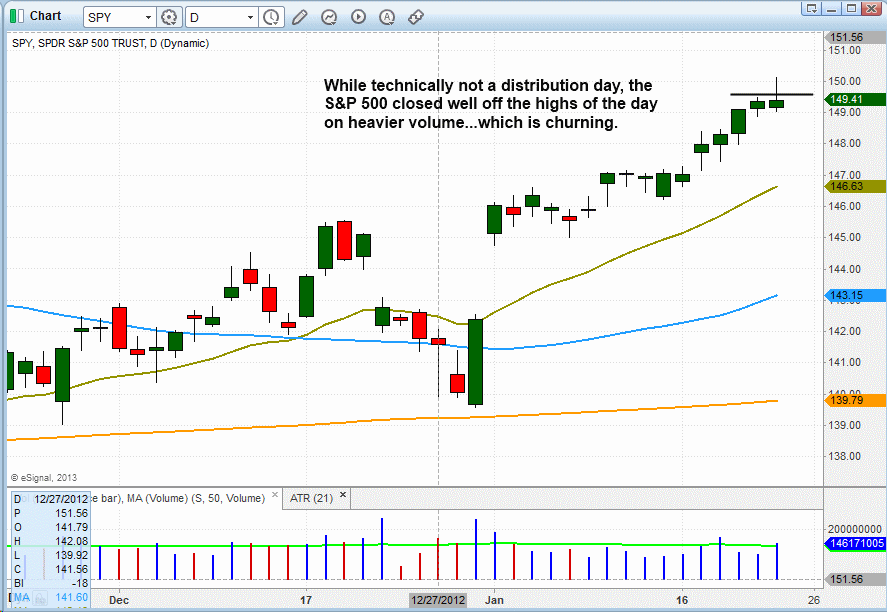Yesterday’s price and volume action in the broad market produced the first true distribution day (higher volume decline) in the Nasdaq since the big gap up of January 2. While we have seen a few weak, unconvincing instances of distribution since then (ie. price action closed well off the intraday lows), yesterday’s (January 24) price action closed near the low of the day, as shown on the daily chart of the Nasdaq Composite Index below:

Although higher volume declines within an uptrend are not positive, it’s important to realize that a single distribution day does not kill a rally. Although yesterday’s action in the Nasdaq could easily lead to a near-term pullback from the recent highs, we can not rule out the possibility of a strong recovery today, as bull markets tend to close out the week in bullish fashion.
Because of its heavy weighting in Apple ($AAPL), which has been undergoing the healthy price correction we predicted back on November 5 of last year, the Nasdaq 100 Index (large-cap sibling of the Nasdaq Composite) has been a complete laggard in 2013. Yesterday’s decline caused the PowerShares QQQ Trust ($QQQ), a popular ETF proxy that tracks the Nasdaq 100, to close right at short-term support of its 20-day exponential moving average (20-day EMA). This is shown on the daily chart of $QQQ below:

It would be a positive technical signal if $QQQ holds support of its 20-day EMA (beige line on the chart above), or just “undercuts” it and promptly recovers. But if it doesn’t hold near yesterday’s low, the next stop could be a test of the $66 area (support of the lows of its recent trading range). Ideally, we would like to see all the main stock market indexes moving in sync with one another. The Nasdaq 100 doesn’t have to lead the broad market higher, but we certainly do not want the price to break down below the 50 and 200-day moving averages (teal and orange lines, respectively, on the chart above).
The SPDR S&P 500 ($SPY), an ETF that follows the price of the benchmark S&P 500 Index, probed above the prior day’s high yesterday morning, but sold off throughout the afternoon. This caused the ETF to give back most of its morning advance and form a bearish reversal candlestick on its daily chart. Although $SPY closed in positive territory, the retreat off its intraday high that occurred on heavier volume is known as “churning,” which is stealth selling into strength by banks, mutual funds, hedge funds, and other institutions:

If the broad market follows through on yesterday’s negative price action and pulls back in, we could see at least a shallow, two to five-day selloff that causes the major indices to find initial, minor technical support near their 10-day moving averages (not shown on the charts above). Such price action would be an absolutely normal and healthy correction in a healthy bull market. A deeper retracement down to the 20-day EMAs would be a less bullish scenario that could indicate the market may need more time (at least two to five weeks) to form a healthy base of price consolidation.
